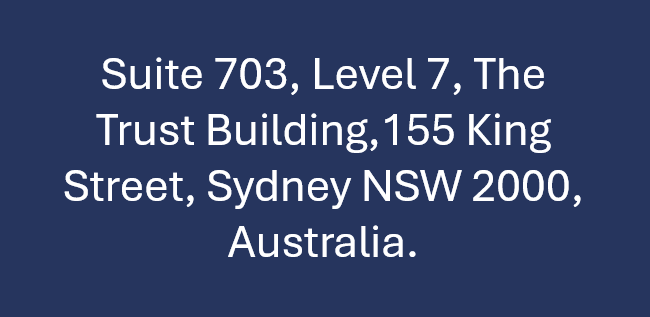ISO Country Codes: Australia vs Austria (Common Confusion)
ISO Country Codes: Australia vs Austria (Common Confusion)
When working with international data or communicating across borders, there are various standardized formats used to identify and distinguish countries. One of the most widely used is the ISO 3166 standard for country codes. However, due to the similarity in names and abbreviations, Australia and Austria often cause confusion for those unfamiliar with the codes. In this post, we'll delve into the ISO country codes for Australia and Austria, highlight common misunderstandings, and provide clear guidelines for their proper use.

Understanding ISO 3166 Country Codes
The International Organization for Standardization (ISO) publishes a standard for country codes, known as ISO 3166. This standard provides unique two-letter (alpha-2) and three-letter (alpha-3) codes for each country, as well as a numerical code (numeric-3). The codes serve as a universal identifier, facilitating communication and data exchange among organizations, governments, and individuals worldwide.
ISO Alpha-2 And Alpha-3 Codes For Australia And Austria
| Country | Alpha-2 | Alpha-3 | Numeric-3 |
|---|---|---|---|
| Australia | AU | AUS | 604 |
| Austria | AT | AUT | 040 |
Comparing the codes, it's easy to see why there's a common mix-up. Both Australia and Austria share the same first letter in their alpha-2 codes (AU and AT), and their names are pronounced similarly in many languages, adding to the confusion.
Common Confusion and Misuses
-
Transposing codes: In haste or ignorance, some incorrect combinations might emerge, such as mistakenly using "AT" for Australia or "AU" for Austria.
-
Lack of awareness: Not understanding the difference between the two countries can lead to unintentional errors in international business, travel, or online interactions.
-
Typos and autocorrect: Faulty keystrokes or faulty autocorrect features on devices can result in swapped codes, further complicating the issue.
Best Practices For Using ISO Country Codes
To avoid confusion and ensure accurate use of ISO country codes for Australia and Austria:
-
Double-check: Verify the codes whenever possible, especially when inputting text or data internationally.
-
Familiarize yourself: Take the time to learn and remember the correct alpha-2, alpha-3, and numeric codes for both countries.
-
Consult reliable sources: When in doubt, refer to official ISO websites, government resources, or reputable online dictionaries for accurate information.
-
Be mindful of pronunciation: Recognize that while the names "Australia" and "Austria" may sound similar in some accents, the distinct codes set them apart.
Additional Tips And Lists
Here are a few more tips and lists to help you navigate ISO country codes:
Countries with alpha-2 codes starting with "A" (excluding AU and AT)
- AD (Andorra)
- AE (United Arab Emirates)
- AF (Afghanistan)
- AG (Antigua and Barbuda)
- AI (Anguilla)
- AL (Albania)
- AM (Armenia)
- AN (Netherlands Antilles)
- AO (Angola)
- AQ (Antarctica)
Countries With alpha-3 Codes Starting With "A" (excluding AUS and AUT)
- AND (Andorra)
- ARE (United Arab Emirates)
- AFG (Afghanistan)
- AGU (Antigua and Barbuda)
- AIA (Anguilla)
- ALB (Albania)
- ARM (Armenia)
- ASW (American Samoa)
- ATG (Antigua and Barbuda)
- AUS (Australia)
In conclusion, while the similarities in name and code between Australia and Austria can lead to common mistakes, understanding the distinct ISO 3166 codes for each country is crucial for accurate communication and data exchange. By following best practices, consulting reliable sources, and familiarizing yourself with the codes, you can minimize confusion and ensure a smoother international experience. Whether in personal or professional contexts, being mindful of these codes will demonstrate attention to detail and a commitment to clarity in global interactions.
ISO Country Codes: Australia vs. Austria – Untangling The AU/AT Mix-Up
Imagine a world without standard rules. Chaos, right? That's why ISO country codes exist. These simple, short labels help everyone speak the same language in global communication, data handling, and online shopping. We're talking about the two-letter codes, like US for the United States, that make international business run smoothly.
But sometimes, even simple codes get mixed up. Take Australia and Austria, for example. They sound so similar, don't they? This common mix-up between their codes, AU and AT, leads to real problems. Think wrong packages, missed flights, or bad business deals.
This article will clear things up. We will show you the exact codes for Australia and Austria. You will learn why people get confused and discover easy ways to stop making these costly mistakes.
Understanding ISO 3166-1 Alpha-2 Codes
What Are ISO Country Codes?
The International Organization for Standardization (ISO) sets global rules for many things. ISO 3166 is their standard for country codes. These codes give each country a unique short identifier. This helps computers and people worldwide know exactly which country you mean.
The alpha-2 format uses just two letters for each country. This is the most popular type of code you will see. It is super handy for things like website domains or shipping forms. Other common codes are GB for Great Britain, DE for Germany, and JP for Japan.
The Specific Codes: AU vs. AT
Now for the main event: getting our two countries straight. Australia and Austria each have their own clear, unique two-letter ISO codes. It is simple to remember once you see them.
-
ISO Code for Australia: AU – Australia's code reflects its name directly.
- ISO Code for Austria: AT – Austria's code also uses the first letters of its name.
These codes were picked carefully. They help avoid confusion with other nations, even if sometimes names sound similar. The idea is to have a short, distinct mark for every place on the map.
Why The Confusion? Unpacking The Similarities
Geographic and Linguistic Proximity (Perceived)
So, why do people mix up Australia and Austria? It is not like they are neighbors on the globe. Australia sits in the Southern Hemisphere. Austria is deep in central Europe. Yet, the problem keeps popping up.
A big reason is how their names sound. "Australia" and "Austria" share many letters and a similar rhythm when spoken. It's easy for your ears to play tricks, especially if English is not your first language. Seeing them written can also look alike, especially in a quick glance. Many people just do not have a strong mental picture of where each country is, so the name similarity takes over.
Real-World Scenarios of Mix-Ups
The confusion between AU and AT is not just a little language hiccup. It leads to real-world headaches, costing time and money. Here are some examples of where these mix-ups happen.
-
E-commerce: Imagine ordering a gift for a friend in Sydney, Australia. If you accidentally pick Austria (AT), that package is headed to Vienna. This means customs troubles, shipping delays, and a very late gift.
-
International business: A business contract meant for an Australian firm could end up being sent to an Austrian company. This creates big legal and financial problems. It can really mess up your deals.
-
Data entry and research: If someone inputs "AT" instead of "AU" in a spreadsheet, your sales numbers for Australia might look bad. Or, research on economic growth could show wrong trends. Bad data means bad decisions.
- Travel and logistics: Booking a flight or hotel for your dream vacation? If you type in the wrong country code, you could end up on the wrong continent. This can be a very expensive mistake to fix.
Navigating International Business And Data
Impact on Global Trade and Logistics
Incorrect country codes like the AU/AT slip can really mess with global trade. Think of all the steps a product takes from factory to customer. Each step needs the right country code. Get it wrong, and you disrupt the whole chain.
Mistakes lead to goods getting stuck at customs. They can cause big delays in delivery. Extra charges for re-routing or storage quickly add up. Companies might fail address checks, leading to lost items or unhappy customers. Experts say that shipping errors can cost businesses a lot of money each year. Accurate country codes make sure products flow smoothly across borders.
Ensuring Data Accuracy In Global Research
In today's world, data drives everything. For market research, academic studies, or figuring out big trends, having the right country codes is key. Using the wrong code, like mixing up AU and AT, makes your data useless.
If market data for Australia gets grouped with Austria's, your company might target the wrong customers. Economic reports could give false signals, hurting investment choices. Even new tech like AI learns from data. If the data has wrong country codes, the AI will make bad predictions. A data scientist once put it simply: "Standardized data is the bedrock of reliable insights." We need those exact codes to trust what our data tells us.
Practical Strategies to Avoid AU/AT Errors
Verification Methods and Tools
No one wants to make an AU/AT mistake. Luckily, there are easy ways to double-check your work. Making sure you have the right country code before you click "send" or "confirm" is a great first step. Always take an extra second to review.
There are also official tools you can use. The ISO website has a lookup tool for all country codes. Just type in the country name and it gives you the code. Many e-commerce sites and shipping services now use address validation software. This tech checks addresses against real databases. It can often catch a country code error before it causes trouble. You could also create simple checklists for your team to use whenever they handle international information.
Training And Awareness For Teams
The best way to stop these errors is to make sure everyone knows the difference. Training staff who deal with global data or shipping is a smart move. Show them why getting AU and AT right matters so much.
Create clear, simple guides. These can list common country codes and highlight pairs that often cause confusion. Put them where people can see them, like next to their computers. A quick reminder or a poster can go a long way. Make it a team goal to avoid these mix-ups. This regular practice builds a habit of accuracy.
Conclusion: Precision In A Connected World
So, we have seen how important ISO country codes are. Remember Australia is AU and Austria is AT. The names sound similar, but these two letters make all the difference. This simple difference avoids costly shipping delays, keeps business deals on track, and makes sure your data is true.
Paying close attention to small details like country codes keeps our global operations running smoothly. It makes sure information is reliable for everyone, everywhere. Getting it right helps us all connect better.




